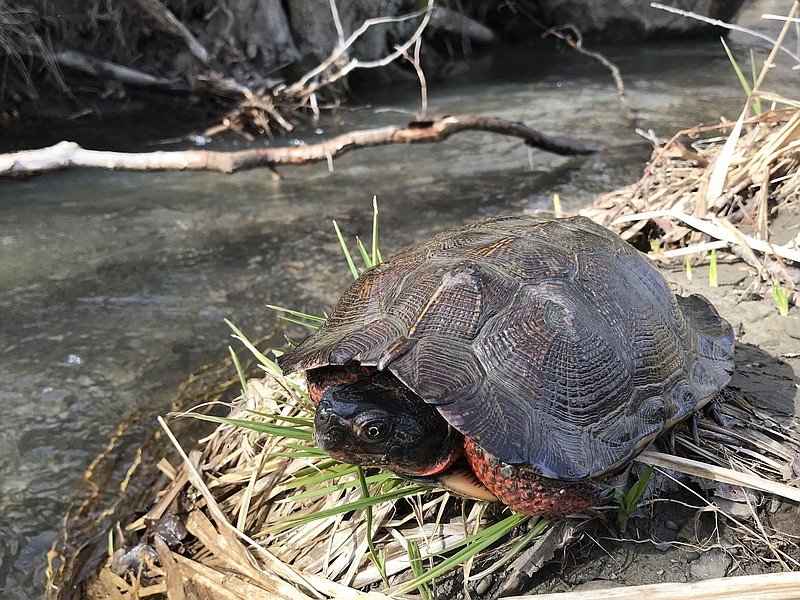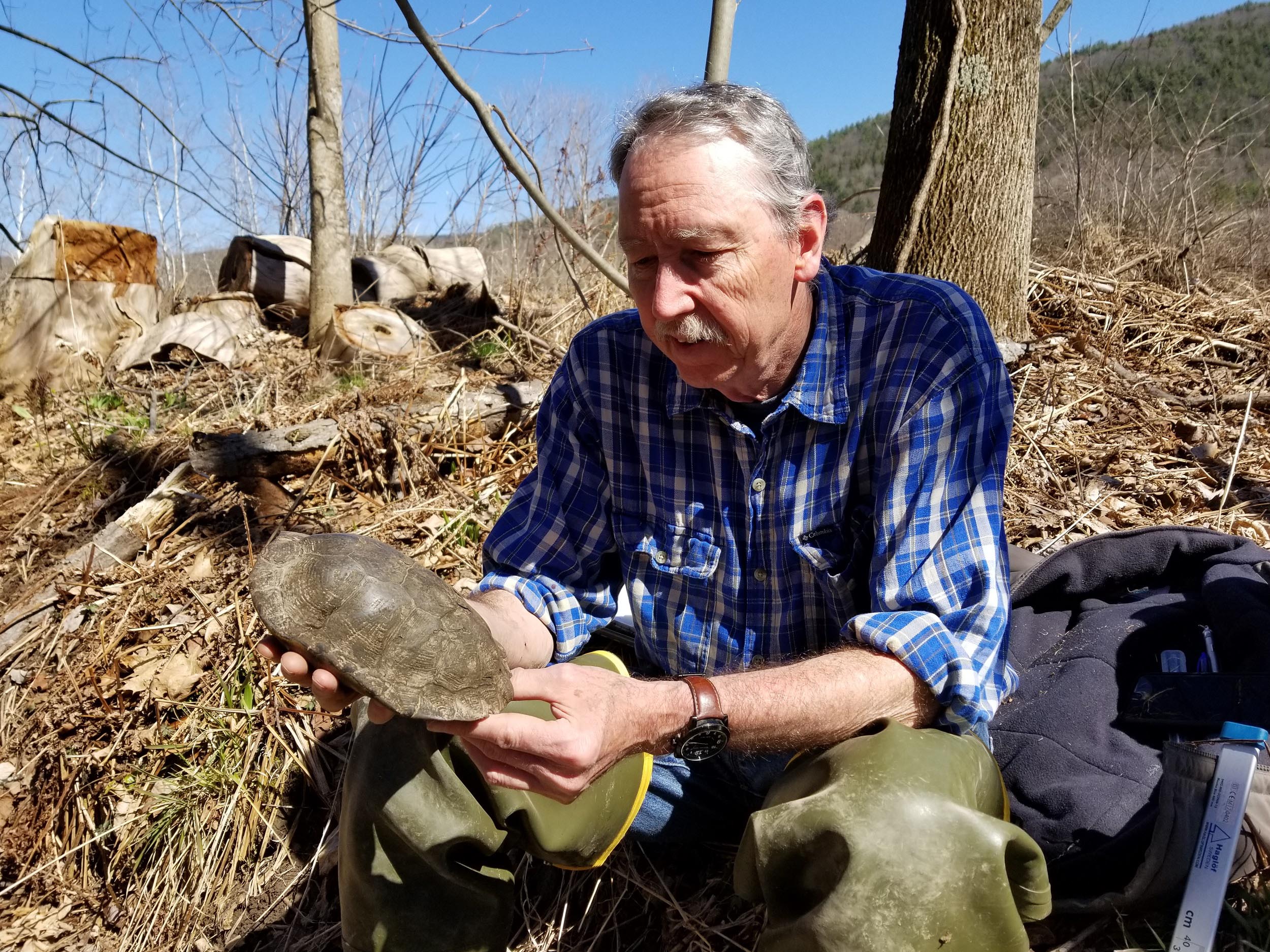Popular wisdom suggests father-and-son bonding moments typically happen during activities like playing catch or learning how to shave. For Dave Collins and his son Evan, however, it was while catching wood turtles and learning about their life history on the banks of a pristine creek in upstate New York.
In 1995, Dave Collins returned to this idyllic locale - a steep valley in the shadow of the Catskill Mountains - to pay a visit to a population of wood turtles he first encountered and intensively studied between 1973 and 1977. Only this time, his son joined him in the field.
"I have pictures of Evan sitting with turtles on the stream bank, a 7-year-old grin on his face," says Collins, the Tennessee Aquarium's director of forests and animal behavior.
Evan Collins is now a 29-year-old biologist working with the U.S. Fish and Wildlife Service and remembers this 20-year checkup vividly. At the time, however, he says he lacked a full appreciation of why they were catching and cataloging the turtles, some of which his father had first encountered more than two decades earlier.
"I guess I didn't grasp the grander purpose of it, but I was aware that we were seeing turtles that Dad had found in the '70s. We were checking in on the animals, on his old pals, I guess," he laughs. "As I got older, we had more discussions about what he was actually doing, and I was able to get more appreciation for the research questions he was pursuing."
Nevertheless, he adds, it was trips like these that sparked his passion for nature and inspired him to pursue a career running, if not in lockstep, then at least in parallel to his father's.
"You can't create an interest in someone, but you can cultivate it," the younger Collins says. "I think Dad really was able to do that by bringing me along for the ride on some of these endeavors, like the turtle project."
This spring, father and son embarked on the first of four biannual visits to the stream to continue what has become a 45-year, long-term study of these endangered reptiles, many of whom have become as familiar as old friends.
At 29, Evan is about the same age his father was when he first encountered the turtles. Just like his father, who spent his first years at the site tirelessly tracking and recording the turtles' movement and use of their habitat, the younger Collins' injection of youth and passion for the animals made him an invaluable asset.
"Having Evan along wasn't just having another set of eyes but another set of young eyes," Dave Collins says. "He's incredible in the field, so that made me feel like we were really going to tear into it."
During a mild spell in late April, the pair returned to the stream, hopeful that the air and water would warm enough to coax some of the brown-shelled, orange-bodied turtles out of hibernation. Over the course of three days, they found 19 turtles. About a dozen were new captures, and half that number had been marked in the '90s, but two were among those that had been studied in the '70s.
Some of the turtles in this stream are at least as old as the elder Collins, who is 68. He says he instantly recognized one of these elder statesmen of the stream as soon as Evan pulled him from under an embankment.
"I was 30 feet from him, and I said, 'That's No. 48!'" Collins laughs. "There was just something about him. Even though he was 40 years older, I could instantly recognize him. It's just like as your friends and relatives age. Instantly, I knew that was that turtle."
Beyond the opportunity for father and son to work together, both Collinses agree that any opportunity to engage in such long-term research is rare and valuable, especially when it's of animals as long-lived as turtles.
"You need that time span to really understand even simple questions like, 'How long can these turtles live?'" Dave Collins says. "I think it would be fantastic if Evan did have an interest to pick up working with this population. Then it has the potential to be a much, much longer study. That would be really neat."
And Evan? Well, like father like son.
"Definitely, yeah," he says. "That would be very exciting for me. To be able to work with the same animals - the same population - as my dad is pretty exciting as well. There are so few long-term data sets out there on any given species in an ecosystem, so the potential is really interesting."
Casey Phillips is a former Times Free Press staff writer who now works for the Tennessee Aquarium.

